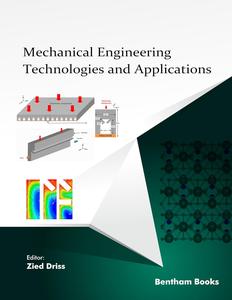
Free Download Mechanical Engineering Technologies and Applications: Volume 3
by Driss, Zied;
English | 2024 | ISBN: 9815179284 | 134 pages | True PDF EPUB | 43.01 MB
This book focuses on cases and studies of interest to mechanical engineers and industrial technicians. The considered applications in this volume are widely used in several industrial fields particularly in the automotive and aviation industries. Readers will understand the theory and techniques which are used in each application covered in each chapter.
Volume 3 includes the following topics:
Numerical simulations of three-dimensional laminar mixed convection heat transfer of water-based-Al2O3 nanofluid in an open cubic cavity with a heated block.
Nonlinear formulations of Element-Free Galerkin Method (EFGM) for large deformation analysis of Ogden's hyperelastic materials, emphasizing incompressibility and mesh distortion avoidance.
Development of a 3D numerical model with LS-DYNA using a coupled SPH-FEM method to simulate hydraulic behavior of a Ski-Jump Spillway with dentates, showcasing precision through validation.
Exploration of enhancing the inlet system of an LPG-H2 fueled engine using a static inclined blade turbine, analyzed through Computational Fluid Dynamics (CFD) simulations.
Effective utilization of Artificial Neural Networks (ANN) in heat transfer applications, addressing issues like fouling in heat exchangers, showcasing their accuracy compared to experimental data.
Investigation of the impact of nitrogen concentration on the structure and properties of ZrN coatings deposited by magnetron sputtering, evaluating variations in structural and mechanical properties.Forced convection in a horizontal cylindrical pipe with pseudoplastic fluid, considering uniform constant heat flux and uniform temperature as boundary conditions.
Modeling and experimental study of a water solar collector coupled to an optimized solar still, aiming to enhance freshwater production in a solar distillation system under specific climatic conditions.
Exploration of the effect of film thickness on the structure and properties of Ti-N films deposited by magnetron sputtering, utilizing theoretical and experimental analysis to confirm the rock salt TiN structure.
The presented case studies and development approaches aim to provide readers with basic and applied information broadly related to mechanical engineering and technology.
